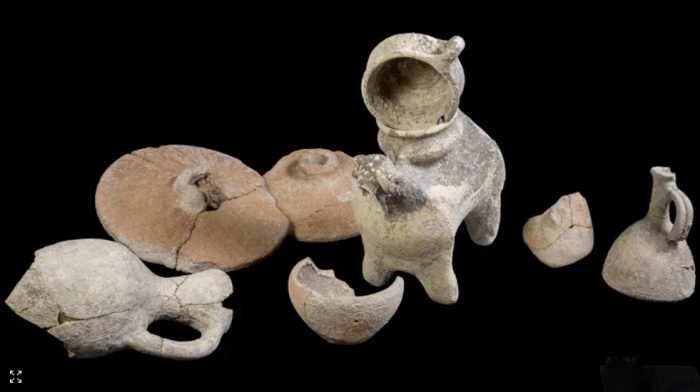Israel uncovers a 5,000-year-old winepress and Canaanite ritual site near Megiddo, revealing early urbanization and pre-Israelite worship traditions.
Megiddo, Israel — Archaeologists in Israel have uncovered breathtaking new evidence of early civilization in the Jezreel Valley, exposing a 5,000-year-old hewn winepress and 3,300-year-old Canaanite ritual artifacts, underscoring the region’s rich biblical and historical continuity.
The discovery, east of Tel Megiddo, was made during major highway expansion works under the Netivei Israel National Transport Infrastructure Company, in full coordination with the Israel Antiquities Authority (IAA). The findings bridge the era between the rise of early urban settlements and the later Canaanite period that preceded the arrival of the Israelites.
“This winepress is a smoking gun — conclusive proof that organized wine production existed here 5,000 years ago,”
said Dr. Amir Golani and Barak Tzin, the IAA’s excavation directors.
They emphasized that while ancient winepresses are common, few can be precisely dated to such an early period of urbanization. Around the winepress, archaeologists found extensive residential remains, indicating Megiddo’s expansion as a major regional hub even millennia before its biblical fame.
🍷 Israel’s Earliest Evidence of Winemaking
The rock-carved press features a treading floor and collection vat, representing one of the earliest examples of industrial-scale wine production in ancient Canaan. This discovery firmly situates the Jezreel Valley — known today for its flourishing vineyards — as a cradle of the Levant’s wine culture dating back five millennia.
🐏 Unearthed: A Canaanite Folk Cult
Among the Late Bronze Age relics, archaeologists discovered a complete ceremonial libation kit, including a ram-shaped zoomorphic vessel, miniature shrine models, Cypriot imports, and ritual bowls. The set’s pristine preservation offers unprecedented insight into Canaanite folk worship — performed by farmers just outside Megiddo’s temple gates.
The ram vessel, designed to pour sacred liquids such as wine, oil, or milk, features a bowl-funnel on its back and a spout-shaped snout for pouring — a sophisticated design symbolizing fertility and divine offering.
“This intact set lets us, for the first time, reconstruct the Canaanite ritual of libation as it truly occurred,”
said Dr. Golani.
The finds suggest that local farmers practiced open-air offerings near rock altars visible from Megiddo’s great temple — a humble counterpart to elite city worship, showing the social and spiritual layers of ancient Canaanite faith.
🏗️ Preserving the Past While Building the Future
Netivei Israel CEO Nissim Peretz called the discovery “a national treasure,” underscoring that modern infrastructure development and heritage preservation can progress hand in hand:
“These remarkable finds prove that Israel can connect its regions while safeguarding the soul of its past.”
IAA Director Eli Escusido echoed that sentiment:
“Layer by layer, the Jezreel Valley reveals its secrets. From ancient winemaking to folk worship, Israel’s soil continues to speak.”
The IAA will showcase these findings at its Northern Region Archaeology Conference later this week, open to the public.
✡️ Significance for Israel and the World
Megiddo — known biblically as Armageddon — has long been a key site for understanding the dawn of urbanization and organized religion in the ancient Near East. These new discoveries not only validate Israel’s role as a guardian of global heritage but also strengthen archaeological ties linking ancient Canaanite culture to the roots of biblical civilization that later flourished in the same land.





